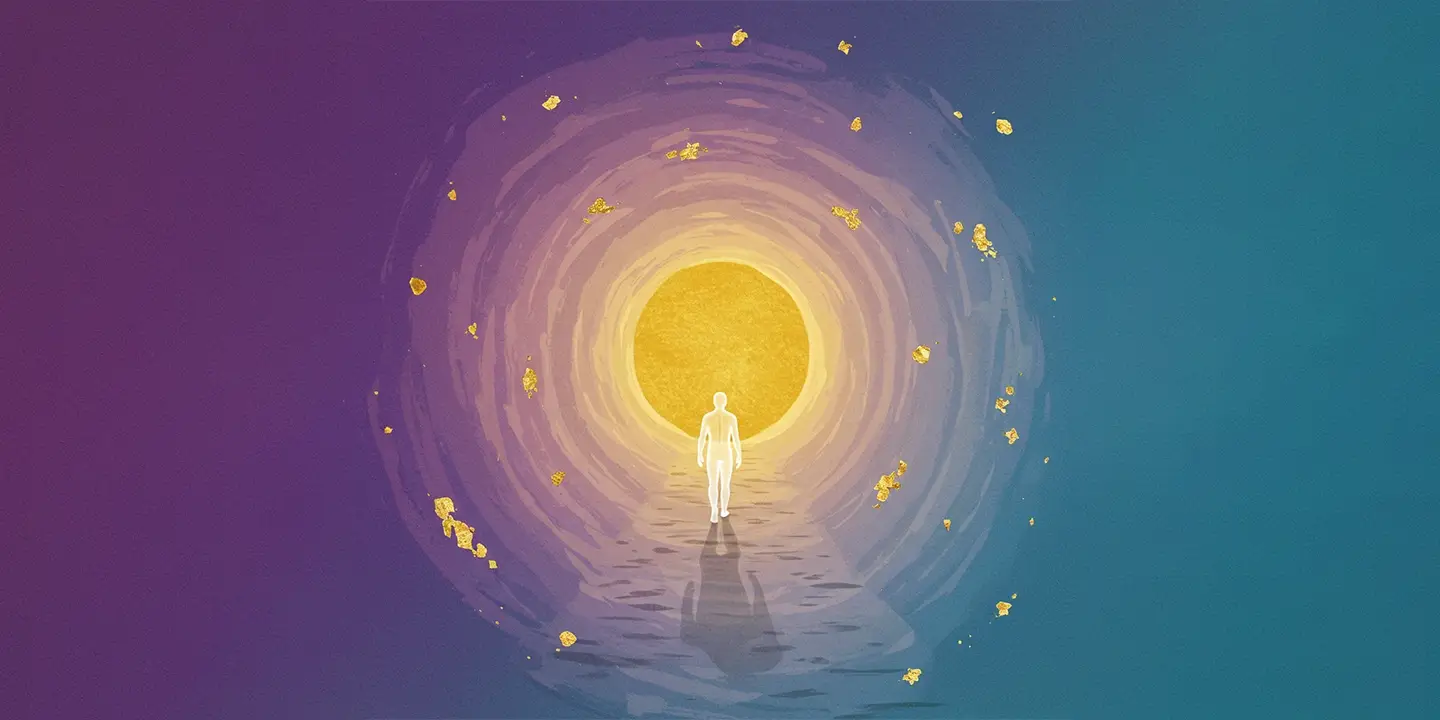Comprehensive List of Afterlife Theories

What is the afterlife?
The concept of the afterlife has been explored by various cultures, religions, and philosophical traditions throughout history. Here’s a list of some prominent afterlife theories.
The most widely believed afterlife theories are typically rooted in religious traditions, as these have been deeply ingrained in cultures and societies for thousands of years. Here's a breakdown of the most commonly believed afterlife theories globally, based on the number of adherents and cultural influence.
1. Religious Afterlife Theories
-
Heaven and Hell (Christianity, Islam, Judaism): Souls are judged and sent to eternal paradise (Heaven) or eternal punishment (Hell).
-
Reincarnation (Hinduism, Buddhism, Jainism, Sikhism): The soul is reborn into a new body based on karma (actions in previous lives).
-
Purgatory (Catholic Christianity): A temporary state of purification for souls not yet ready for Heaven.
-
Moksha (Hinduism): Liberation from the cycle of reincarnation and union with the divine.
-
Nirvana (Buddhism): The end of suffering and the cycle of rebirth, achieved through enlightenment.
-
Valhalla (Norse Mythology): A warrior’s paradise for those who die in battle.
-
Elysium (Ancient Greek Religion): A paradise for the righteous and heroic.
-
Ancestral Realm (Indigenous Traditions): A place where ancestors reside and influence the living.
-
Duat (Ancient Egyptian Belief): The underworld where souls journey after death, guided by rituals and the weighing of the heart.
-
Sheol (Ancient Hebrew Belief): A shadowy underworld where all souls go, regardless of morality.
2. Philosophical Afterlife Theories
-
Eternalism (Philosophy of Time): Past, present, and future exist simultaneously; death is a transition within a timeless reality.
-
Idealism: Consciousness is fundamental, and the afterlife is a continuation of mental or spiritual existence.
-
Materialism/Atheism: Consciousness ceases at death; there is no afterlife, only the physical world.
3. Spiritual and New Age Afterlife Theories
-
Astral Plane: A non-physical dimension where souls travel after death.
-
Spirit World: A realm where spirits reside and interact with the living.
-
Akashic Records: A metaphysical library containing all knowledge and experiences of every soul.
-
Life Between Lives (LBL): A transitional state between reincarnations where souls reflect and learn.
-
Universal Consciousness: Individual consciousness merges with a cosmic or universal consciousness after death.
4. Scientific and Speculative Afterlife Theories
-
Simulation Theory: Reality is a simulation, and "waking up" after death means returning to a base reality or higher level of existence.
-
Quantum Immortality: Consciousness continues in parallel universes where death does not occur (based on the many-worlds interpretation of quantum mechanics).
-
Digital Afterlife: Uploading human consciousness into a digital format for immortality in virtual environments.
-
Egg Theory: A speculative idea that all humans are fragments of a single, universal consciousness experiencing individual lives to grow and eventually reunite.
5. Mythological and Folk Afterlife Theories
-
Underworld (Various Cultures): A subterranean realm for the dead, such as Hades (Greek) or Xibalba (Maya).
-
Ancestor Worship: Deceased ancestors exist in a spiritual form and influence the living.
-
Dreamtime (Australian Aboriginal Belief): A timeless dimension where spirits reside and shape the living world.
-
Bardo (Tibetan Buddhism): An intermediate state between death and rebirth where the soul undergoes transformation.
6. Psychological and Existential Afterlife Theories
-
Eternal Return: Life and the universe are cyclical, and individuals may relive their lives infinitely.
-
Symbolic Immortality: Immortality achieved through legacy, memories, or contributions to society.
-
Near-Death Experiences (NDEs): Vivid experiences during clinical death, often interpreted as glimpses of an afterlife.
7. Eclectic and Syncretic Afterlife Theories
-
Multidimensional Existence: The afterlife exists in higher dimensions beyond human perception.
-
Panpsychism: Consciousness is a fundamental aspect of the universe, and death is a transformation of consciousness rather than its end.
-
Egg Theory (Expanded): All individuals are fragments of a single, universal consciousness experiencing separate lives to learn and grow, eventually reuniting into a unified whole.
8. Other Theories
-
Reincarnation with Purpose: Souls reincarnate to fulfill specific missions or learn particular lessons.
-
Parallel Universes and Afterlife: Death leads to existence in a parallel universe where life continues.
-
Cyclical Time and Eternal Recurrence: The universe repeats infinitely, and individuals relive their lives in an endless loop.
Key Themes Across Theories
-
Transition vs. End: Many theories view death as a transition to another state of existence rather than an end.
-
Consciousness Continuation: A recurring idea that consciousness persists in some form after death.
-
Judgment and Karma: Some theories involve moral judgment or karmic consequences determining the afterlife.
-
Unity and Oneness: Many spiritual theories emphasize merging with a greater whole or universal consciousness.
Recent Posts
How to Market a Clothing Brand Online: 15 Strategies
How to Market a Clothing Brand Online: 17 Proven Strategies for 2025 In 2025, the…
Giforade
Lorem ipsum dolor sit amet enim. Etiam ullamcorper. Suspendisse a pellentesque dui, non felis. Maecenas…